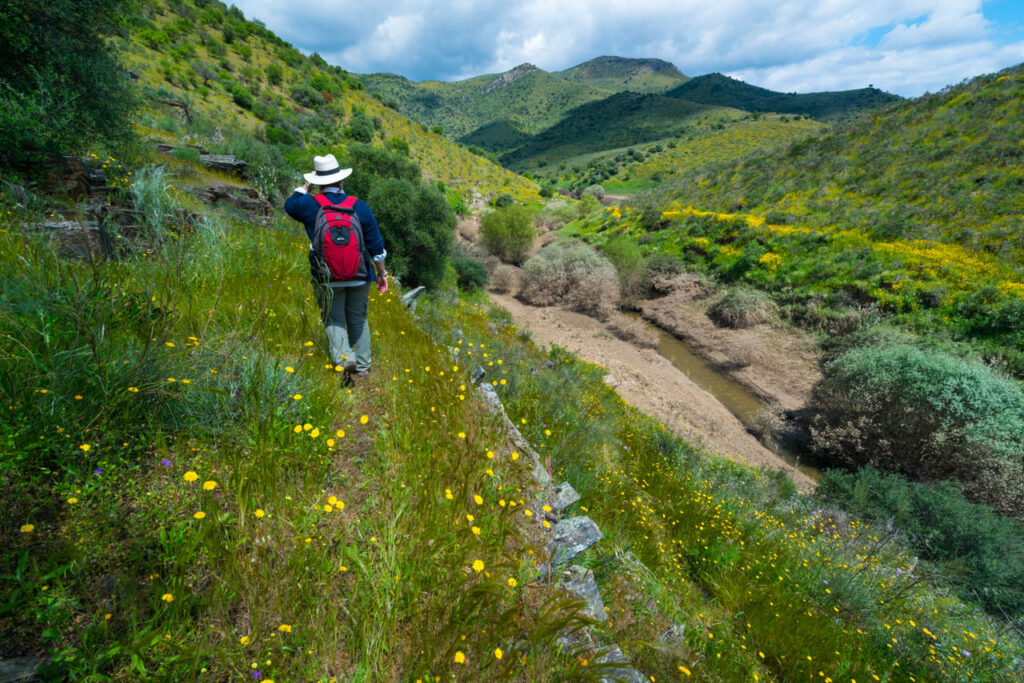A newly established rewilding site in northern Portugal, known as Ermo das Águias (‘wilderness of the eagles’), is providing an opportunity to improve landscape connectivity and promote the regeneration of native vegetation and enhance the benefits of natural grazing.
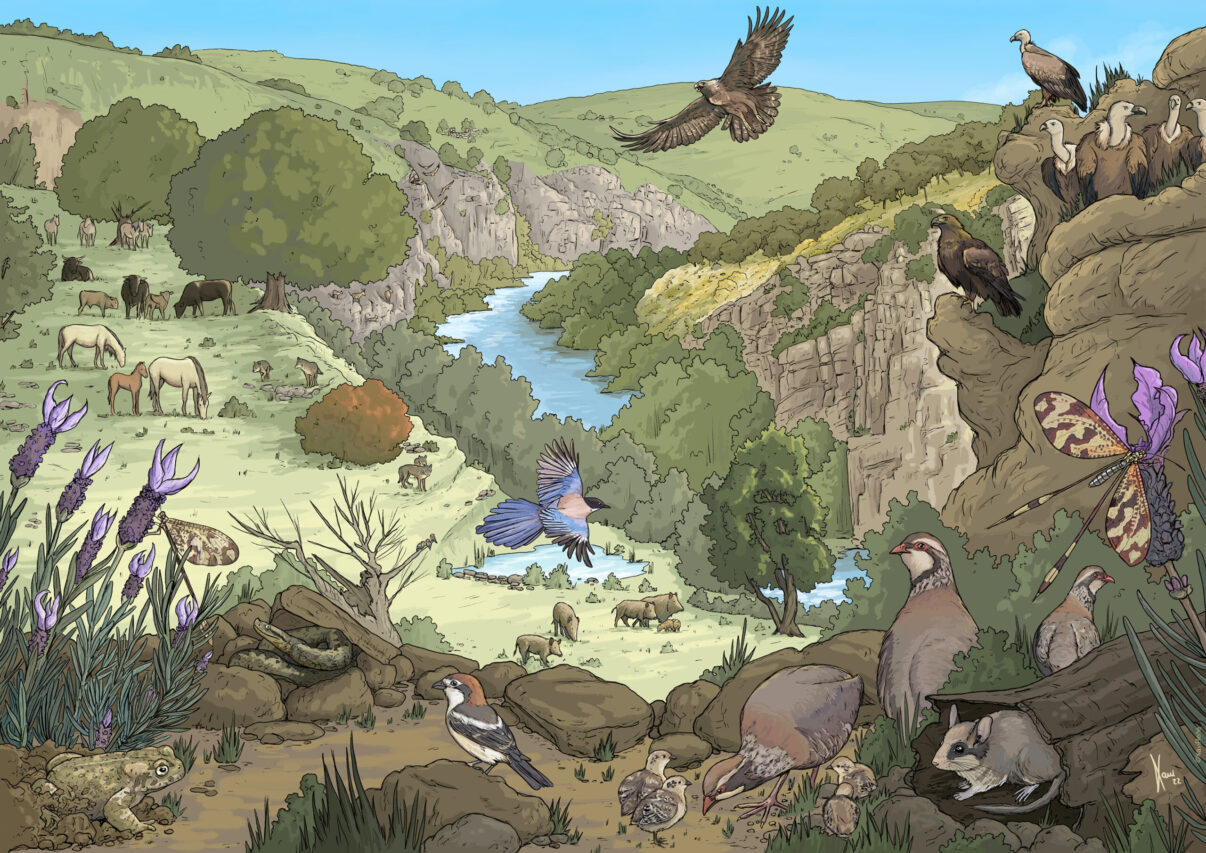
Improving connectivity
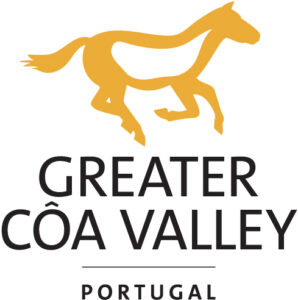 The new site Ermo das Águias will open to the public in June, with a network of marked trails exploring the area. Funded by the Endangered Landscapes Programme, the 700 hectares of land in the parish of Vale de Madeira established the second in a series of core rewilding sites along the course of the Côa River. The first area – Vale Carapito – was established in 2021.
The new site Ermo das Águias will open to the public in June, with a network of marked trails exploring the area. Funded by the Endangered Landscapes Programme, the 700 hectares of land in the parish of Vale de Madeira established the second in a series of core rewilding sites along the course of the Côa River. The first area – Vale Carapito – was established in 2021.
Both areas are part of a 120,000-hectare wildlife corridor being developed to connect the Malcata mountain range in the south with the larger Douro Valley in the north. “The goal,” says Marta Cálix, Head of Operations at Rewilding Portugal, “is to acquire and rewild pieces of land within the landscape to improve connectivity and to protect these areas that are still in better condition or have the most potential in terms of ecological restoration and protecting biological diversity.”
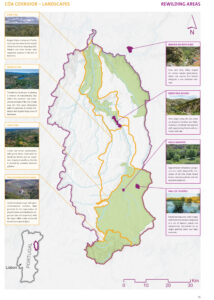
Creating natural firebreaks
Ermo das Águias has been boosted by the introduction of native Sorraia horses to create mosaics in the landscape, demonstrating the benefits of natural grazing for increasing biodiversity and decreasing the risk of wildfire.
Fire has always been a natural process in the Greater Côa Valley landscape, but in recent years Portugal has suffered an unprecedented surge in the frequency of wildfires, inhibiting the recovery of native vegetation, eroding the seedbank and threatening human lives.
“In this particular area, over the past 10 years, the land has burned on average every 2.7 years,” explains Marta. “So, one of our key aims is to reduce the frequency of fires, to allow natural vegetational succession to take place.”
Climatic changes are leading to a greater number of hot and windy days that create the perfect conditions for wildfires to spread quickly and burn large areas. Rather than occurring at intervals of decades, intense wildfires now scorch this landscape every couple of years. Fire surveillance can help to intercept these blazes before they get out of control, but the best defenses are natural firebreaks, and this is where nature stands ready to lend a hand.
Natural reinforcements
The risk and frequency of damaging wildfires have been exacerbated by a lack of large wild herbivores. The Sorraia horses are creating natural firebreaks by grazing down long grasses, reducing fuel loads, and trampling down the flammable thickets of tinder-dry broom, freeing the local community from dependence on expensive and labour-intensive mechanical interventions.
“These horses, what they do is – they eat, and they trample, and they create mosaics in the landscape, so they maintain grasslands which are an important part of local biodiversity, but which also create natural firebreaks,” explains Marta.
With fewer, less intense fires and the additional contribution of Sorraia horses dispersing seeds across this recovering landscape, forests here will have a chance to expand and mature, casting cooling shade and restoring the complex web of woodland life.
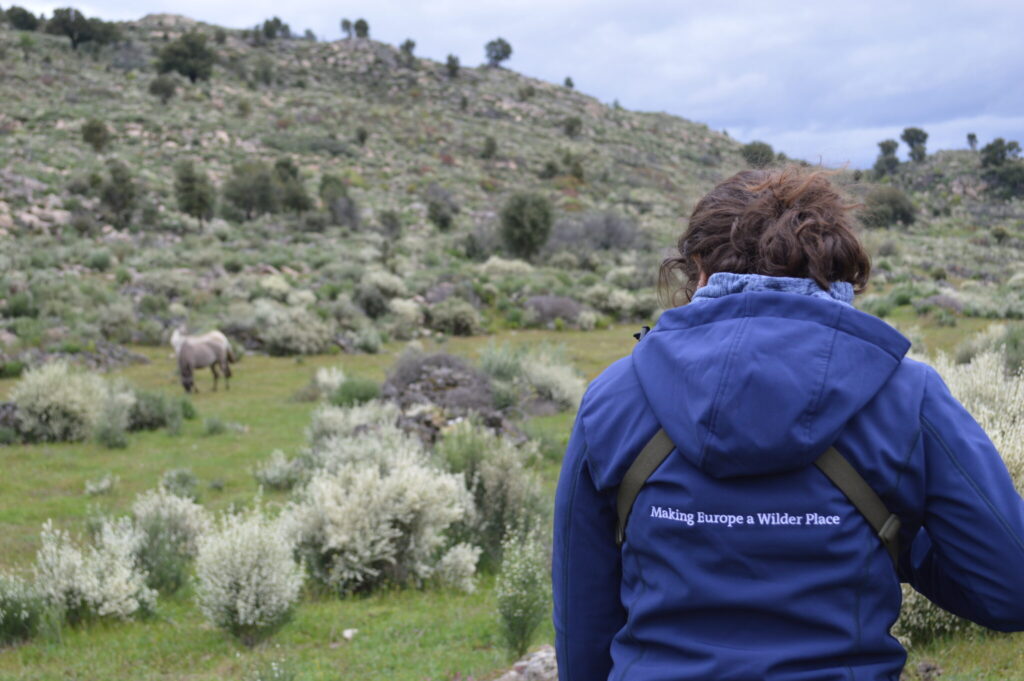
Sorraias
The native Sorraia horse are perfectly adapted to thrive in this harsh landscape. Eight females and a juvenile male have been released, with plans in place to soon introduce a breeding stallion to the young herd. The idea is to start small, so the carrying capacity of the land is not reached too rapidly, but over time, as the herd grows, the hope is that these tough trailblazers will produce descendants that can be dispersed around the Greater Côa Valley.
Sorraias are a rare and ancient breed, indigenous to the Iberian Peninsula, but which now number only a few hundred animals, as less ‘primitive’ breeds have become more popular. Curiously, the Sorraia horse is probably a survivor of a wild equine which in the Middle Ages was called ‘zebro’. Sorraia foals still retain the stripes which characterised the original zebro, stripes which may have inspired Portuguese explorers to give African wild equids the name ‘zebras’.
Today, the introduction of Sorraia horses to Ermo das Águias provides an opportunity to safeguard the future of these special animals and to re-establish their missing role within this ecosystem.
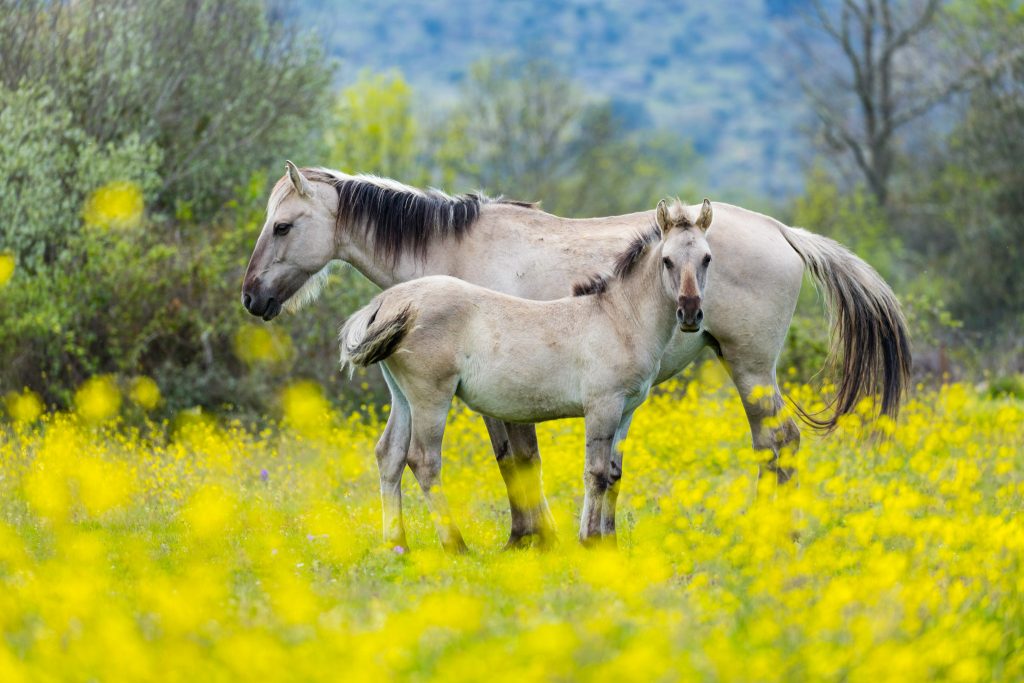
Stepping stones
The establishment of the Sorraia horses is only the beginning. “Once we get used to managing these horses, we are considering bringing the first herd of Tauros to Portugal”, enthuses Marta. Just as Ermo das Águias is serving as a stepping stone to increase connectivity along the Côa River, the Sorraia horses appear to be serving as a stepping stone towards the re-establishment of a wilder, more resilient regional ecosystem.
Equally importantly perhaps, charismatic animals like the Sorraia horses and the Tauros help encourage pride in the Côa Valley’s remarkable natural heritage, creating fresh appreciation for the soaring eagles and vultures, and encouraging tolerance for returning wolves. Local people are accustomed to celebrating the area’s rich historical and cultural traditions but didn’t always appreciate the equally rich natural heritage they are responsible for. And on a practical level, the visible results of the Sorraia reintroduction – reducing wildfires and boosting tourism – help build vital trust in the Rewilding process, breathing life back into this recovering landscape and securing a more sustainable future for everyone.
